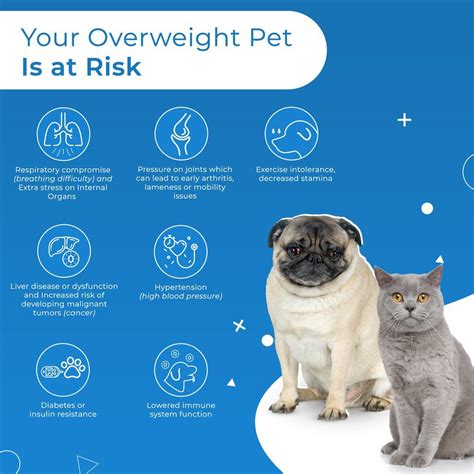Introduction

Obesity is a growing problem among pets, with estimates suggesting that over 50% of dogs and cats in the United States are overweight or obese. Excess weight can lead to a range of health problems for pets, including heart disease, diabetes, arthritis, and cancer. Fortunately, there are a number of things pet owners can do to help their furry friends maintain a healthy weight.
Why Pet Weight Management Matters
Obesity is a serious health concern for pets. It can lead to a number of health problems, including:
- Heart disease: Obesity puts extra strain on the heart, which can lead to heart failure.
- Diabetes: Obesity can lead to insulin resistance, which can develop into diabetes.
- Arthritis: Obesity puts extra weight on the joints, which can lead to arthritis.
- Cancer: Obesity has been linked to an increased risk of some types of cancer, such as lymphoma and mammary cancer.
Benefits of Pet Weight Management
Helping your pet lose weight can have a number of benefits, including:
- Improved health: Losing weight can help reduce the risk of developing serious health problems, such as heart disease, diabetes, arthritis, and cancer.
- Increased energy: Pets who lose weight often have more energy and are more active.
- Longer lifespan: Pets who maintain a healthy weight tend to live longer than those who are overweight or obese.
How to Help Your Pet Lose Weight
There are a number of things you can do to help your pet lose weight, including:
- Feeding a healthy diet: The first step to helping your pet lose weight is to feed them a healthy diet. This means choosing a food that is low in calories and fat, and high in fiber. You should also avoid feeding your pet table scraps or other high-calorie treats.
- Exercising regularly: Exercise is another important part of a weight loss plan for pets. This means taking your pet for walks, playing fetch, or swimming. The amount of exercise your pet needs will vary depending on their age, breed, and activity level.
- Monitoring your pet’s weight: It is important to monitor your pet’s weight regularly so that you can track their progress and make adjustments to their diet and exercise plan as needed. You can weigh your pet at home using a bathroom scale or at your veterinarian’s office.
Common Mistakes to Avoid
There are a number of common mistakes that pet owners make when trying to help their pets lose weight, including:
- Cutting calories too quickly: Cutting calories too quickly can lead to weight loss that is too rapid, which can be dangerous for your pet. It is important to reduce your pet’s calories gradually over time.
- Not exercising enough: Exercise is an important part of a weight loss plan for pets. If your pet is not getting enough exercise, they will not lose weight as quickly as they could.
- Giving up too soon: Losing weight can take time and effort. It is important to be patient and consistent with your pet’s weight loss plan.
Case Detail
Highlight
- The pet’s owner was concerned because the pet was overweight and had started to develop health problems.
- The veterinarian recommended a weight loss plan that included a healthy diet and exercise.
- The pet lost weight and is now healthier and more active.
How to Stand Out
- Use a creative new word to generate ideas for new applications.
- For example, the word “pet” can be used to generate ideas for new pet products, services, and apps.
- You can also use the word “pet” to generate ideas for new ways to market existing products and services to pet owners.
Conclusion
Pet weight management is an important part of responsible pet ownership. By following the tips and advice in this article, you can help your pet lose weight and live a healthier, longer life.





















